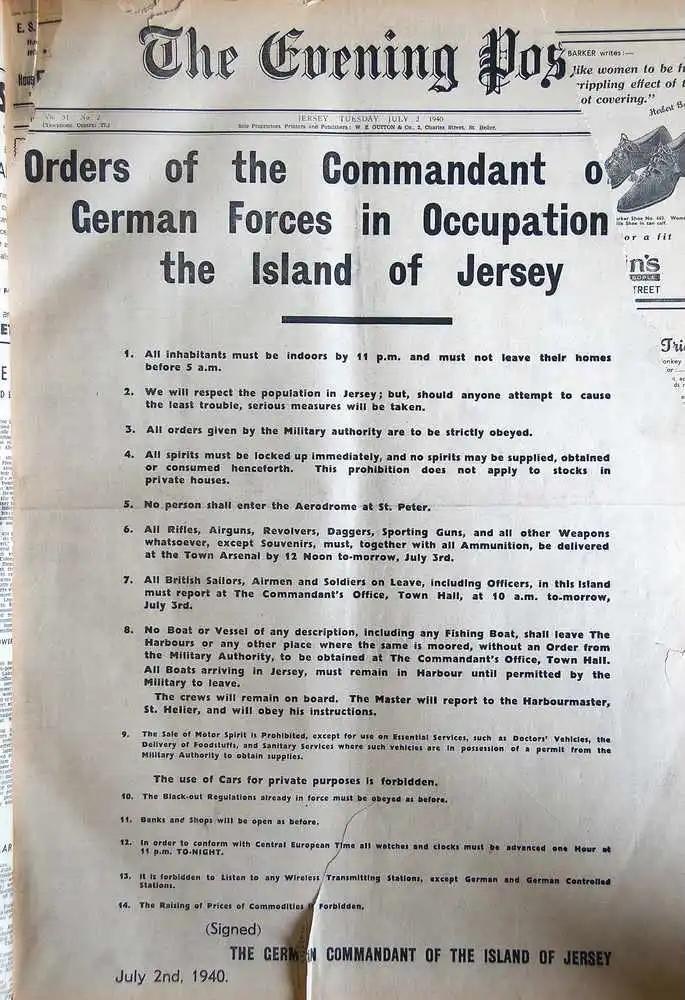This article is taken from the July 2025 issue of The Critic. To get the full magazine why not subscribe? Right now we’re offering five issues for just £25.
History is full of “What-ifs?”, perhaps nowhere more than the Second World War. What if Britain, France and Czechoslovakia had gone to war when Nazi Germany annexed the Sudetenland in October 1938? What if the German resistance’s July 1944 bomb plot had succeeded and killed Hitler?
And, most delicate of all, what if the Nazis had invaded and conquered Britain? Our national myth, rooted in the Battle of Britain, D-Day and Dunkirk is that we would have fought and never surrendered.
But would we? The pro-Nazi sympathies of a good part of Britain’s ruling elite are well documented. They reached right to Buckingham Palace and elements of the Royal family. Edward VIII, later the Duke of Windsor, openly admired the Third Reich.
Len Deighton and C.J. Samson explored a Nazi-ruled Britain in their excellent novels SS-GB and Dominion. More recently, and less dramatically, the Covid lockdown tyranny revealed a meekly obedient population — whilst a good number of curtain-twitchers gleefully snitched on their neighbours.
In fact, we have a good idea what a Nazi occupation of mainland Britain would have looked like. Once Churchill withdrew the military from the Channel Islands in June 1940, the Nazis swiftly invaded and stayed until May 1945.

Contemporary film footage included in Britain under the Nazis: Forgotten Occupation, Channel 4’s masterful, unsettling two-part documentary, shows a British policeman meekly opening a car door for strutting German officers.
Much of the population simply tried to survive. A small number collaborated. Young women who took up with German soldiers were known as “Jerrybags”. At first the occupation was comparatively light-handed, at least compared to Poland. But as the war ground on, resistance networks grew, and Nazi rule became much harsher.
Claude Cahun, a half-Jewish lesbian surrealist, fired what she called “paper bullets”, little anti-Nazi tracts that she typed up and secretly distributed with her lover for years. Frank Falla, a journalist, worked on an underground anti-Nazi newspaper.
Several Jews, including Therese Steiner, an Austrian nurse, were rounded up and eventually sent to Auschwitz. A concentration camp was constructed on Alderney, one of the smaller islands. Thousands of POWs were drafted to work on sea wall defences, but many starved.
Historical documentaries are often composed of talking heads and contemporaneous footage. This series takes a more imaginative approach, drawing on material from historians but also those who lived through the occupation, including Claude Cahun and Frank Falla.
This brings the story to life as we get to know the real-life characters, including Alexander Coutanche, the bailiff, or governor, who tried to negotiate a path protecting the islanders whilst dealing with the occupiers.
Quite when necessary engagement becomes collaboration is an unspoken question. Coutanche remained in office whilst Jersey’s Jews were deported. Cahun survived her imprisonment and died in Jersey in 1954. Falla, the journalist and resister, returned from Germany, although two of his comrades died there in prison.
Interviewed by British officials, Falla asked for action to be taken against the Irishman who had denounced him. None would be, he was told, and he should forget all about it.
Indeed, forgetting as much as possible about the Nazi occupation of the Channel Islands was officialdom’s preferred approach for decades. Their rapid abandonment and the meekness of many islanders under Nazi tyranny stirred up too many uncomfortable questions.
Alexander Coutanche was knighted after the war and later made a life peer. Britain Under the Nazis is haunting television that asks a lot of difficult questions. But, thankfully, there are those who preserve the memory of those years.
For those who are still wondering “What would I have done?”, much more fascinating material can be found at frankfallaarchive.org, a first-rate website about Falla’s wartime work and his legacy.
Far to the north of the Channel Islands, season two of The Rig is unfolding in the Arctic. The six-part eco-disaster thriller series, showing on Prime Video, has moved from the North Sea to the Stac, a secret high-tech facility in the freezing, snowy, wastelands.
Back in the 1970s and the glory years of disaster movies such as The Towering Inferno and The Poseidon Adventure, the action always unfolded in a closed arena — one impossible to escape from. The first season of The Rig saw the cast trapped on an oil rig whilst far beneath them the Ancestor, a dark primeval force, swirled and menaced through the icy waters.
But the Arctic backdrop — and the Ancestor — are too good to waste. When a submersible rover carrying two crew members gets trapped on the seabed and starts cracking under pressure, their colleagues must venture outside to try and rescue them. The visuals are stunning, with plenty of long panning takes across the crystal wilderness and high overviews shot from above.
The complex storyline takes in corporate malfeasance, a looming quasi-biblical apocalypse and sci-fi supernatural fantasy. At times it feels like the fast-paced narrative could slow down and allow more character development and interplay between the leading roles.
Season two stands alone, but it does help to watch season one, which is still available. Season two directly follows on and does take a while to introduce the characters’ back-stories. But the show’s creators steadily ramp up the tension, and some scenes are edge-of-the-seat as the story twists and turns.
There are surprises too, for not everything is what it seems — especially where the Ancestor is concerned. The Rig is a big, sometimes sprawling drama, but it’s imaginative and adventurous, taking creative risks that usually pay off.












